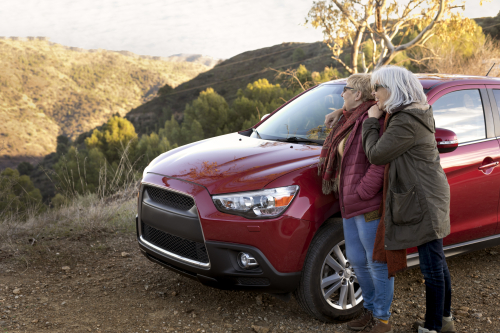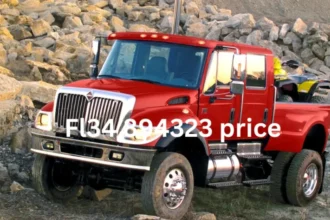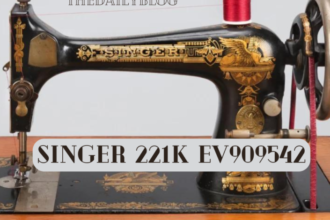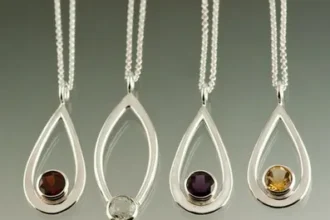Buying a vehicle is a significant investment, and when it comes to getting the best value, timing can make all the difference—especially in a vast and diverse state like Texas. Whether you’re shopping for a fuel-efficient commuter car, a dependable family SUV, or a rugged truck that can handle off-road terrain, choosing the right month to buy could save you thousands. For savvy buyers exploring options for used cars in Wichita Falls, TX, understanding the best times of the year to make a purchase can mean walking away with a better deal, improved financing options, or even upgraded features. This guide explores the best months to buy a used car in Texas, backed by seasonal trends, dealership behaviors, and market insights.
January – The Post-Holiday Slowdown Advantage
January is often one of the slowest months for car dealerships, and that can be great news for buyers. After the holiday rush, consumer spending tends to decline. Dealerships feel the pinch and are more willing to negotiate with motivated buyers.
This period is ideal for snagging year-end inventory leftovers, especially from trade-ins and lease returns. Salespeople are also eager to start the year strong, which can give you extra leverage when negotiating price and financing terms.
February – Early-Year Promotions and Tax Prep
While not as active as some later months, February continues the slow-season advantage. Many dealerships run President’s Day sales events during this time, offering special financing rates or discounts to clear out remaining previous-year inventory.
Moreover, some sellers start preparing for the influx of buyers who will soon receive tax refunds. Getting ahead of this rush can position you as a buyer in a market that hasn’t yet become competitive.
March – Tax Refunds and Trade-Ins Hit the Market
March marks the beginning of a seasonal shift. Tax refund season leads many people to use their returns as down payments, increasing demand and inventory turnover. This is also when dealerships start seeing an uptick in trade-ins and lease returns.
While increased demand can make it slightly harder to negotiate, the greater availability of vehicles gives buyers more options. If you’re targeting a specific make or model, March can be a great time to shop with variety in mind.
April – Spring Cleaning and Dealership Quotas
April is often considered a “shoulder” month—between the early-year slow season and the summer buying spike. Dealerships may start receiving newer inventory and need to make space on their lots, offering markdowns on older models.
It’s also the end of Q1 for many sales teams, and they’ll be pushing to meet quotas. This motivation can work in your favor, especially if you’re a prepared buyer who has done research and secured financing in advance.
May – Memorial Day Weekend Bargains
Memorial Day weekend is one of the top promotional events of the year for car dealerships. It kicks off the summer buying season with strong incentives, rebates, and special financing deals.
In Texas, where dealership inventory tends to be high to meet statewide demand, this holiday can lead to particularly competitive pricing. Buyers should expect crowds, but they can also expect plenty of deals—especially if they’re flexible on color and trim options.
June – Mid-Year Inventory Shuffles
June is a strategic time to buy, especially for those seeking good trade-in values. It’s not as hectic as July or August, but dealerships are already thinking ahead to the next model year. This forward-looking focus can result in generous discounts on vehicles that have been sitting on the lot for months.
Because Texas has a robust market for used trucks and SUVs, June often sees a boost in inventory from people trading in older vehicles before summer road trips. If you’re in the market for family or recreational vehicles, June is a solid month to browse.
July – Independence Day Promotions and Price Drops
Fourth of July sales are another major event on the dealership calendar. Used car buyers can benefit from these sales as dealerships try to keep up the momentum of the summer selling season.
However, July can also bring higher temperatures and more buyers, which may slightly reduce negotiation power. That said, price reductions on older inventory from the previous year are more frequent, particularly if new model-year vehicles have begun to arrive.
August – Peak Inventory and Year-End Preparation
August is when dealerships begin receiving the next year’s models, which means they become especially motivated to clear older stock—including used inventory that’s been hanging around.
This transition phase is ideal for buyers looking for deeper discounts or certified pre-owned options. In areas like Texas, where dealership lots are often large, selection is still wide and competitive, particularly for popular brands and models.
August also offers a quiet window before the Labor Day sales spike, which gives discerning buyers a chance to shop before the crowds return.
September – Labor Day Sales and Back-to-School Deals
Labor Day weekend is widely regarded as one of the best times to buy a car, and that applies to the used market as well. Dealerships offer aggressive promotions to coincide with the end of summer and the start of the school year.
This month is especially ideal for families shopping for safe, reliable vehicles for teens or college-bound drivers. Trade-in options are abundant, and some sellers may be eager to close deals before the slower fall months.
October – The Quiet Advantage
By October, the dealership rush has started to cool off, but sales teams still have quarterly and year-end goals to hit. This quieter shopping season can benefit used car buyers who want to avoid crowds and push for more personalized service.
Dealers may also be more flexible with pricing or add-ons, especially on vehicles that have lingered on the lot. It’s a great time to negotiate things like warranties, service plans, or free inspections.
November – Black Friday and End-of-Year Strategy
Black Friday has expanded beyond electronics into automotive sales, with many dealerships offering impressive savings to coincide with the national shopping holiday.
This month is also the ramp-up period for year-end clearance events. Dealers want to clear space for new trade-ins and end-of-year deliveries, making them more open to negotiation. Keep in mind that while selection may narrow, pricing tends to be favorable for committed buyers.
December – The Ultimate Month for Deals
If you can wait until the end of the year, December is often the best month to buy a used car in Texas. Dealerships are trying to hit both quarterly and annual sales goals. Salespeople are under pressure to meet targets and may offer generous discounts or bonuses to close deals.
Also, dealerships are preparing their lots for the incoming year’s inventory, which means steep markdowns on everything from economy cars to luxury sedans and pickups. The closer you shop to the end of the month, the more negotiating power you’re likely to have.
Conclusion
The timing of your used car purchase in Texas can greatly impact your buying power, vehicle selection, and overall satisfaction. Whether you’re browsing dealership lots, exploring online listings, knowing which months bring the best opportunities is essential. From the post-holiday slump in January to the year-end clearance push in December, every month offers its own unique advantages. Planning your purchase around these patterns can help you drive off with not only the car you want but also the deal you deserve.

















